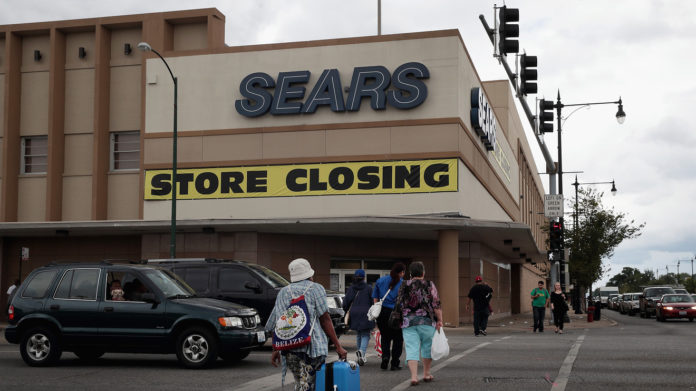Over just the past year, the number of publicly traded U.S. corporations has shrunk by more than 100, to less than 3,500. Over the last 20 years, that number has dropped by more than half (see chart, below).
In fact, according to Wilshire Associates, the last time their flagship index, the Wilshire 5000, actually contained at least 5,000 stocks was Dec. 29, 2005. And note that the greater-than-100-company reduction over the last year is a net number. There actually have been several hundred IPOs during the same period (237 since the beginning of 2017, according to Renaissance Capital), so the number of disappearing companies is even greater.
Which is why it’s harder than ever for stock investors to beat a simple index fund.
The latest U.S. company on the rocks is Sears Holdings
SHLD, -5.70%
, which some speculate is on the verge of bankruptcy. If Sears goes out of business, it would be just one of a long line of companies ceasing to exist.
Read: Sears is likely to collapse, but its biggest stakeholder will be just fine
What’s going on? No doubt several factors have been at play, including the widely noted tendency of startups to wait longer before going public (if at all), and the increased number of mergers and acquisitions. But the factor that has the greatest long-term implications for investors is the emergence of what Dartmouth University engineering professor Geoffrey Brown calls the “Winner Take All” economy. By this he means an economy that is increasingly dominated by a relatively few large players.
Put simply, if a company isn’t one of the few winners, like Sears, it may not survive.
In an interview, Brown referred to the increasing percentage of corporate profits that come from the top 100 U.S. firms. In 1975 that percentage was 48.5%, according to research conducted by finance professors Kathleen Kahle of the University of Arizona and Rene Stulz of Ohio State. Twenty years later, in 1995, that percentage had grown only slightly to 52.8%.
By 2015, the most recent data point the researchers have calculated, this percentage had surged to 84.2%.
The average U.S. stock is riskier.
Here’s why this is important for stock investors:
• The average U.S. stock is riskier. Unless a company is among the few that earn the lion’s share of total corporate profits, it will be scrambling for crumbs along with the other 3,000+ firms that are not among the economy’s winners. Some years a company may show a modest profit, and its stock will benefit. But in other years it will post a loss, and its stock will plunge. The stock’s volatility will soar.
• Diversification is essential. Unless you are confident that you know which companies will be the economy’s winners in coming years, the only way of diversifying away the typical individual stock’s high risk is by owning dozens of issues. Several decades ago, for example, you could construct a well-diversified portfolio with around 20 stocks. Today, it’s probably double that number, and is likely to become even larger in coming years. Accordingly, a broad-market index fund becomes the obvious choice.
• An index fund is the obvious choice for another reason as well: The impact of not owning even a handful of the top earners is greater than ever. Even a portfolio that owns dozens of stocks, and which otherwise appears well-diversified, could still lag the market if it doesn’t own all the top profit generators which dominate the economy.
In short: As Sears reminds us, the opposite of “winner takes all” is “loser takes none.” Adjust your investment strategies accordingly.
For more information, including descriptions of the Hulbert Sentiment Indices, go to The Hulbert Financial Digest or email mark@hulbertratings.com .
Read: The stores that have thrived amid the retail apocalypse
Also: You can make more money on small-cap stocks by playing this overlooked index
Source : MTV













